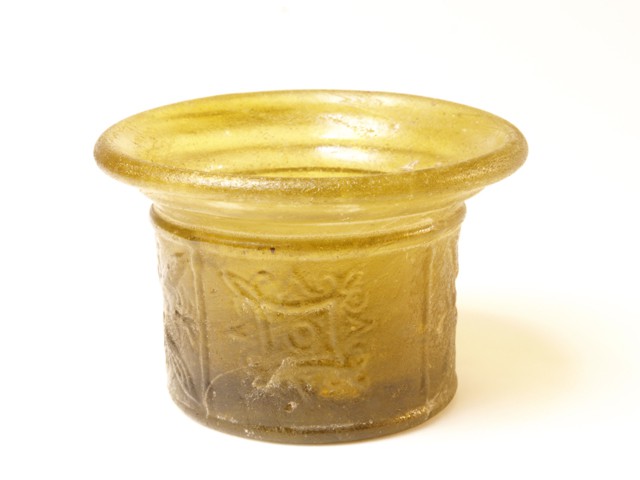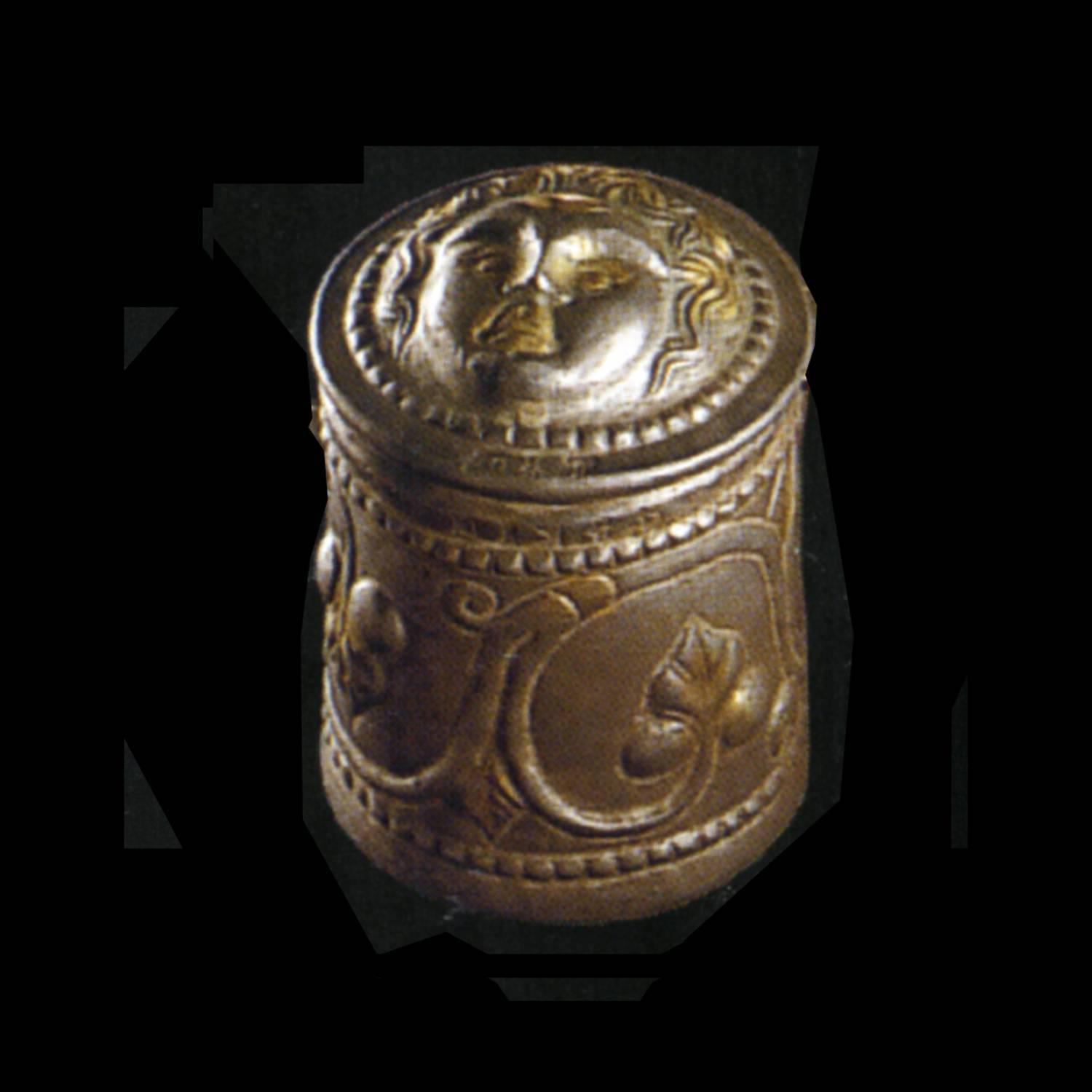Berislav Stefanac, Silver pyxides with glass liners from the necropolis of Roman Jader
https://www.academia.edu/35868124/Silver_pyxides_with_glass_liners_from_the_necropolis_of_Roman_Iader
“Relief-ornamented silver pyxides with a glass inset were mostly found in rich graves and, along with numerous grave goods, represent an important indication of the taste of local customers. According to the present state of research, it could be claimed that these objects arrived to Liburnia in the mid-1st century from Italy and were used by the wealthy in their everyday activities. The pyxides had a considerable aesthetic, but also artistic value, which is confirmed by the careful processing of precious metal and the traces of gilding on certain specimens. The workshop specialized for the production of this type of products was most likely operative in northern Italy, also the centre for distribution for the neighbouring provinces. Besides the masters of toreutics who produced the richly decorated silver coatings, the manufacturing process also demanded the involvement of glass manufacturers for the production of glass receptacles. The use of glass containers, besides protecting the silver coating, also enabled the long-term storing of the contents, especially liquid and semi-liquid aromatic substances.”
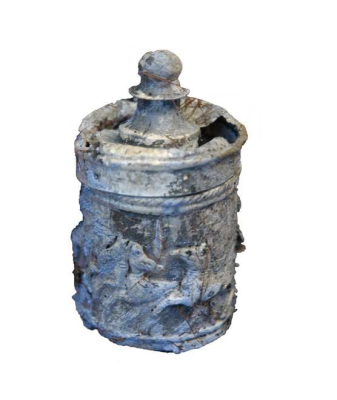
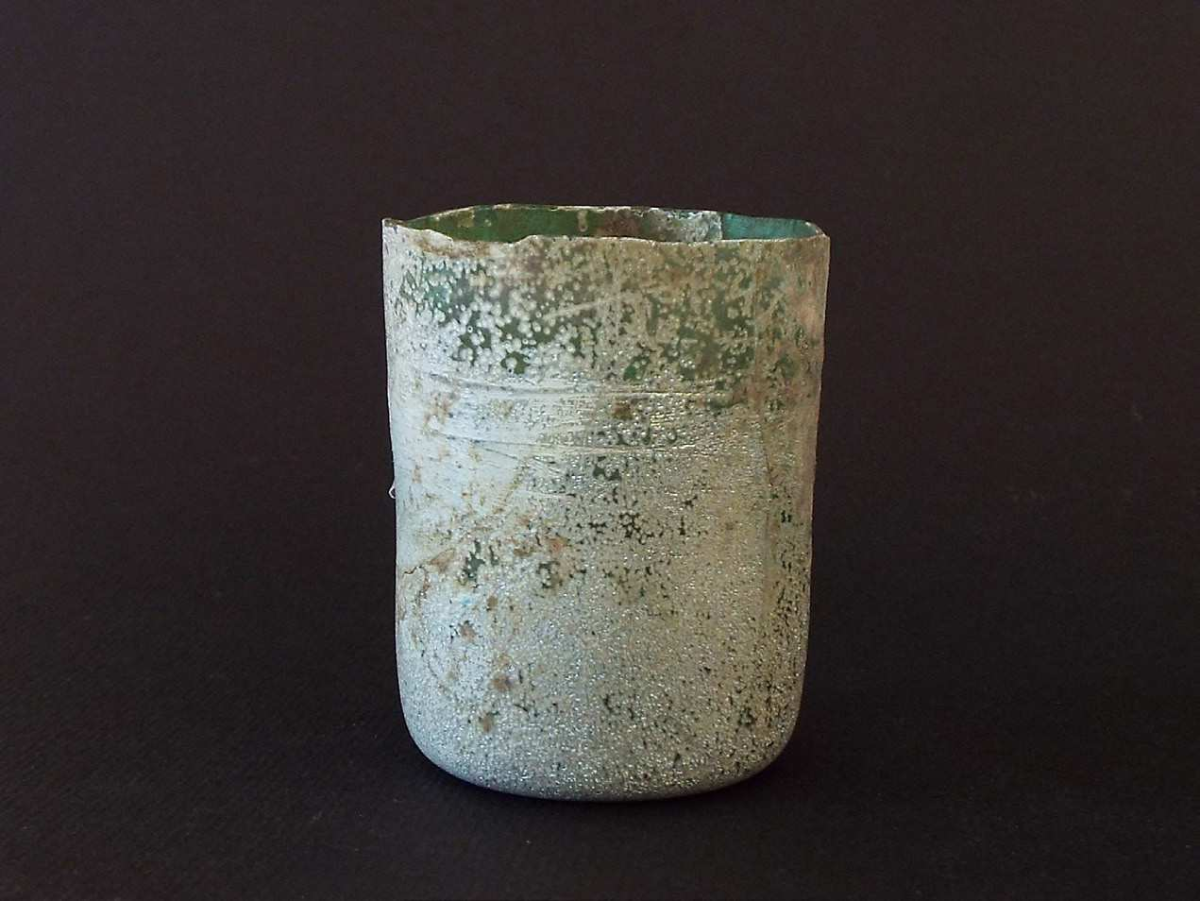
“A silver cylindrical pyxis with a conical lid with a ball on top. The body is made of two layers of thin silver sheet, the outer one of which is embossed. The decoration covers most of the body and lid. On the outer mantle there is a central frieze depicting a race in the circus, of which only a detail with three horses in a race and a conical column has been preserved. The upper part of the composition is closed with a relief ribbon border. On the lid, under the profiled handle, there is a decoration in the form of densely strung relief ribs.
Inside the pyxide is a cylindrical glass container made of bluish-green glass with extremely thin walls. The recipient’s body tapers slightly from top to bottom. Irregularities created during cutting are visible on the flat rim.
Manufacturing technique: silver part – stamping; glass part – free blowing
H= 4.0 cm; width = 3.5 cm (silver mantle); h= 3.9 cm; w= 3.0 cm
(glass container)
Date: second half of the 1st century”
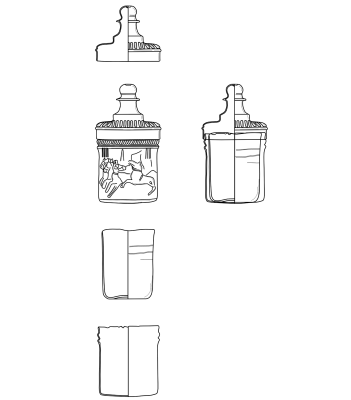
“A silver pyxis with gilding was found in the grave of a burnt deceased (grave 410), as a contribution inside a cylindrical stone urn, inside a glass urn. The cremation burial contained a significant number of metal, glass and ceramic finds. Inside the urn were enclosed: an iron spatula, an iron knife with a silver coating, an iron ring with a gem and a silver pyxis with a glass insert. A large number of items were found outside the urn, among which glass finds predominate (three conical bowls, a flask with a bell-shaped body, two plates, three square jugs, three balsamariums and an ariballos with a bronze hanging set). It should certainly be noted that two large iron strigils were discovered along with the ariballos. The grave also contained several ceramic finds, namely: three ceramic nose lamps with volutes and a sigilate bowl. The aforementioned findings allow the grave to be roughly dated to the second half of the 1st century.
The silver pyxide with a glass vessel from grave 410, due to its design and decorative features, is included in the circle of quality works of ancient artistic creativity. The metal part is made in two layers, from an inner undecorated shell and an outer richly decorated shell. The decorative sheet metal on the lid and the outer shell of the pyxide form a unique unit both stylistically and technically. Due to extensive damage, it is not possible to make out all the details of the relief display, however, the part where the horses in the race are shown is clearly recognizable. In addition to zoomorphic motifs, a cone-shaped column (obelisk) is carved in shallow relief on the preserved covering, which enables an approximate reconstruction of the decorative composition. Based on parallels, the mantle depicts a scene of a two-chariot race pulled by eroti. A similar decorative pattern from the repertoire of circus races with scenes of two-chariots with eroti can be seen on analogous examples from Rome and Draguinan in France. Important for this topic is the fact that inside both silver pyxides there was a glass recipient. In the enumeration of the few close analogies, it is certainly worth mentioning the silver pyxis with a glass container from Nezakci, the outer covering of which is decorated with a motif of a quadriga with a horseman and a depiction of a trope.
In an archaeological article published in 1938, information about another silver pyxis with a glass recipient from Zadar was preserved. After the Second World War, all traces of the object were lost, but based on the available descriptions and photographs, it is possible to reconstruct its original appearance and archaeological context. The specimen was discovered during archaeological research at the Jader necropolis, in the grave of a burnt deceased inside a square stone urn (grave 8).
Various other items were discovered in the grave, among which a ceramic plate with the seal, a large ceramic lantern with two noses, a decorated bone hairpin, a bone stylus (?), a round bronze mirror with a perforated border and eight glass balsamariums should be singled out. Along with the burned remains of the deceased, carbonized remains of six different fruits (almonds, juniper berries, acorns, date pits, peach pits, hazelnut shells) were found. Most of the finds indicate that the grave was built around the middle of the 1st century.
The cylindrical pyxis from grave 8 typologically corresponds to the previously mentioned analogous specimens. It is of sophisticated design, made of two layers of thin silver sheet with an inserted glass receptacle.
The inner shell acted as a covering for a thin glass container, while the outer shell had a decorative function. Although all the details of the relief decoration have not been reliably identified, the preserved photograph shows that the entire mantle was decorated with vegetable motifs. On the upper part, in shallow relief, a laurel wreath is shown, while the lower part of the mantle is filled with leaf-like shoots.”
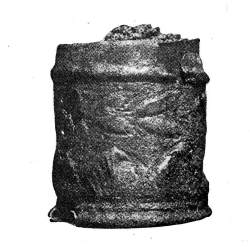
(Berislav Stefanac after: Inglieri 1938)
“Silver cylindrical pyxis made of two layers of thin silver sheet. The decoration covers most of the body. On the outer mantle there is a central frieze with vegetable motifs. It is in the lower part of the garland, while the upper part is filled with a garland of lance-shaped leaves.
Inside the pyxide is a cylindrical glass container made of extremely thin-walled glass.
Manufacturing technique: silver part – stamping; glass part
– free blowing
H= 4.0 cm; w= 3.2 cm;
Date: second half of the 1st century”
The relief decoration of the silver pyxis may have been made using a stone vessel as a matrix for example.
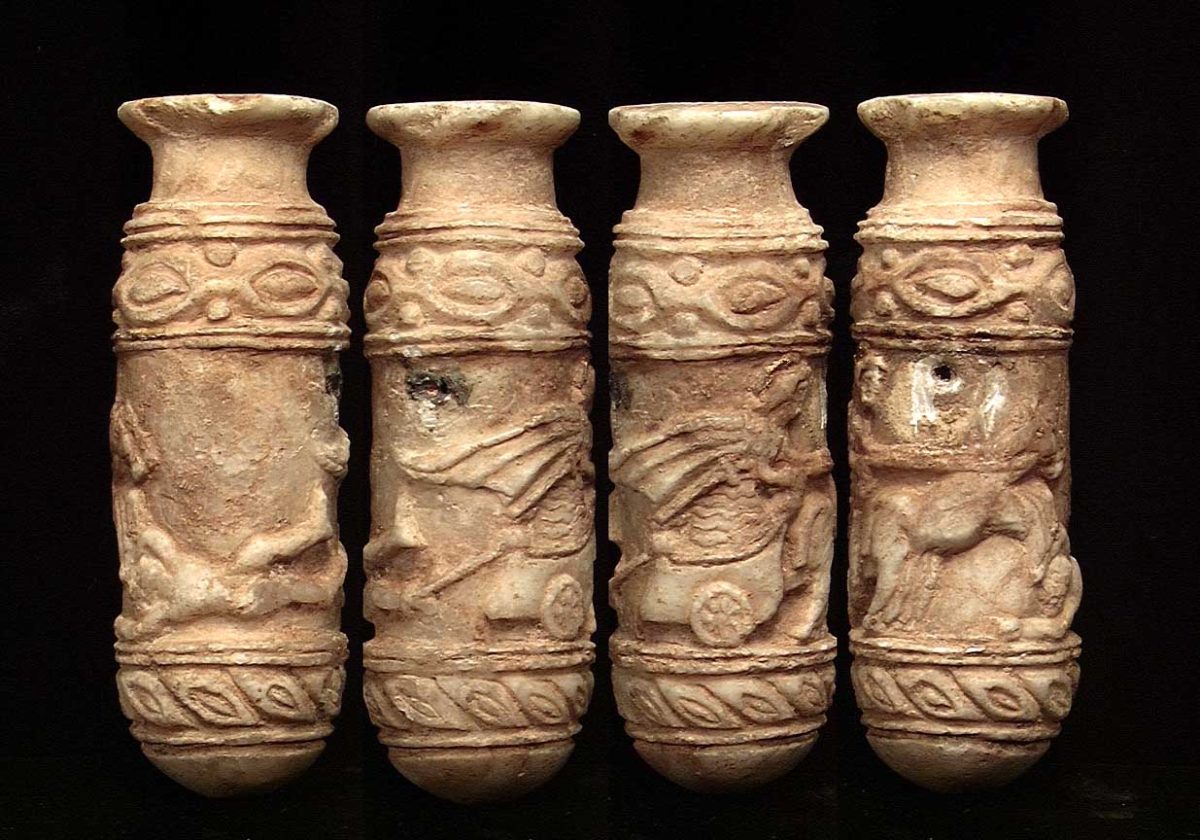
Hellenistic alabastron, 2nd-1st century BC.
“The alabaster perfume vessel carved in relief with Achilles dragging the body of Hector behind his chariot around the walls of Troy, ornamental floral registers above and below, traces of sheet gold overlay, remains of an ancient bronze pin embedded in small suspension? holes on the sides, the whole of fine white fine grained alabaster with a golden honey patina. 1.5 x 4.4 inches. In excellent condition all original with no repair or restoration. A unique museum quality example of fine Greek art. Provenance: An extensive North Eastern collection. Acquired via private sale from the collection of a New York entertainer in the early 1990’s.”

